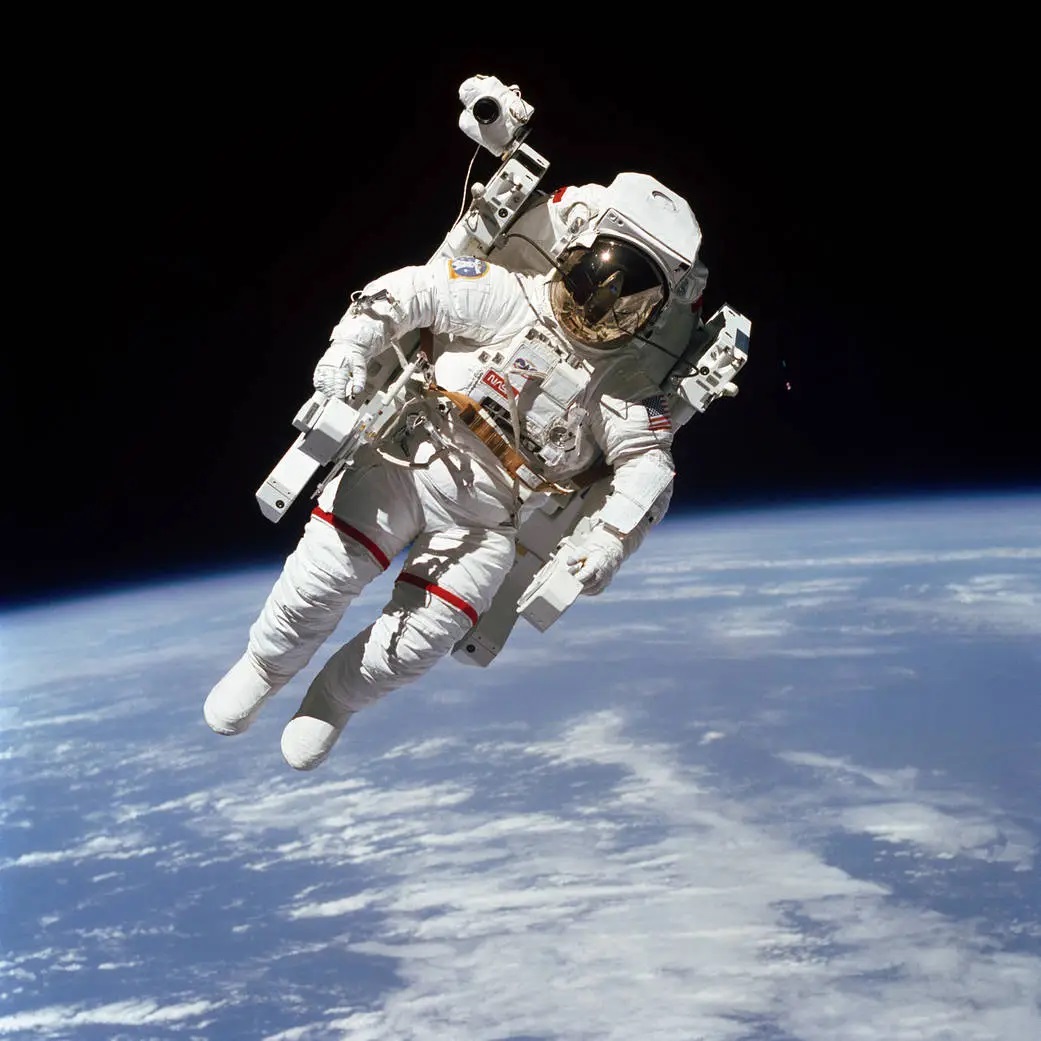Floating in space: 40 years since the first untethered space walk
Dressed in a spacesuit and wearing a large backpack, the astronaut floats gently upwards, light as a snowflake against the dark sky. As he floats, he gradually increases the centimetres, the metres, between his body - in its protective support system - and the Challenger space shuttle from which he emerged.
This is the American astronaut Bruce McCandless II. It is 7 February 1984 and he is making the first untethered spacewalk using NASA’s Manned Manuoeuvring Unit or MMU, a project his team has been working on since 1966.
Suspended, and getting colder by the moment, McCandless reaches the agreed distance of almost 100 metres from the shuttle. He has become the first person to make an untethered spacewalk, a moment captured on camera by astronaut Robert Gibson, and inspiring countless imaginations back on earth.
Footage of Bruce McCandless' untethered spacewalk, 1984
McCandless joked: “That may have been one small step for Neil, but it's a heck of a big leap for me!" A particularly pertinent comment: McCandless had been part of the NASA CapCom (capsule communicator) team during the 1969 Apollo moon landing.
Marking the anniversary of this first untethered space walk, President of FAI's Astronautic Records Commission (ICARE), Scott Neuman, commented:
“As we contemplate building larger structures in space, the ability to manoeuvre and work in space will be a key capability. As that day approaches, it is appropriate to remember and celebrate Bruce McCandless' achievement, and the team who did it first.”
How did the MMU work?
Space manoeuvring units had long been subject to engineers’ furrowed brows and sharpened pencils.
The Soviets came up with the Zvezda unit, worn around the body almost like a babywalker, but this was never tested. NASA had previously had some success with handheld propellors: light, but a challenge to manoeuvre. A self-contained hydrogen peroxide fuelled rocket pack – the AMU – was tested for the US Air Force in 1966, but caused the unfortunate Gene Cernan to dramatically overheat.
The MMU was first initiated as a project in 1966. Controllers on the two extendable arms allowed the astronaut to operate the propulsion system and perform extravehicular activities. With a full propellant load, its mass was 148 kilograms, and the typical velocity was 25m/second.
The second person to use the MMU in space was McCandless’ colleague, Robert L. Stewart during the same mission. The pair referred to one another as ‘Buck’ and ‘Flash’ on board the shuttle, after the comic strip heros Buck Rogers and Flash Gordon.

Pointing out the importance in history of the MMU, Neuman continues:
“Although the MMU was only used on a few missions, for the astronauts who flew it, it must have been an amazing experience to fly freely in space! The MMU is a great example of bringing a science fiction idea into reality through dedicated engineering and the courage of astronauts to do what has never before been done.”
Spacewalk milestones
- The first ever spacewalk was made by Soviet cosmonaut, Alexei Leonov on 18 March 1965, who spent 12 minutes 9 second outside his aircraft, the Voskhod 2, tethered by a rope, and made an FAI record.
- Svetlana Savitskaya, also a Soviet cosmonaut, became the first female to perform a spacewalk on 25 July 1984 on the Soyuz T-12 mission, setting an FAI record for extravehicular duration in space (3 h 33 min 04 sec)
- The NASA Apollo program totalled over 160 hours across the 14 spacewalks on the surface of the moon.
- The longest spacewalk was made by Susan Helms and James Voss on 11 March 2001. It lasted 8h 56 min.
- There have been 267 spacewalks at the International Space Station since December 1998.
Image and video credit: NASA

